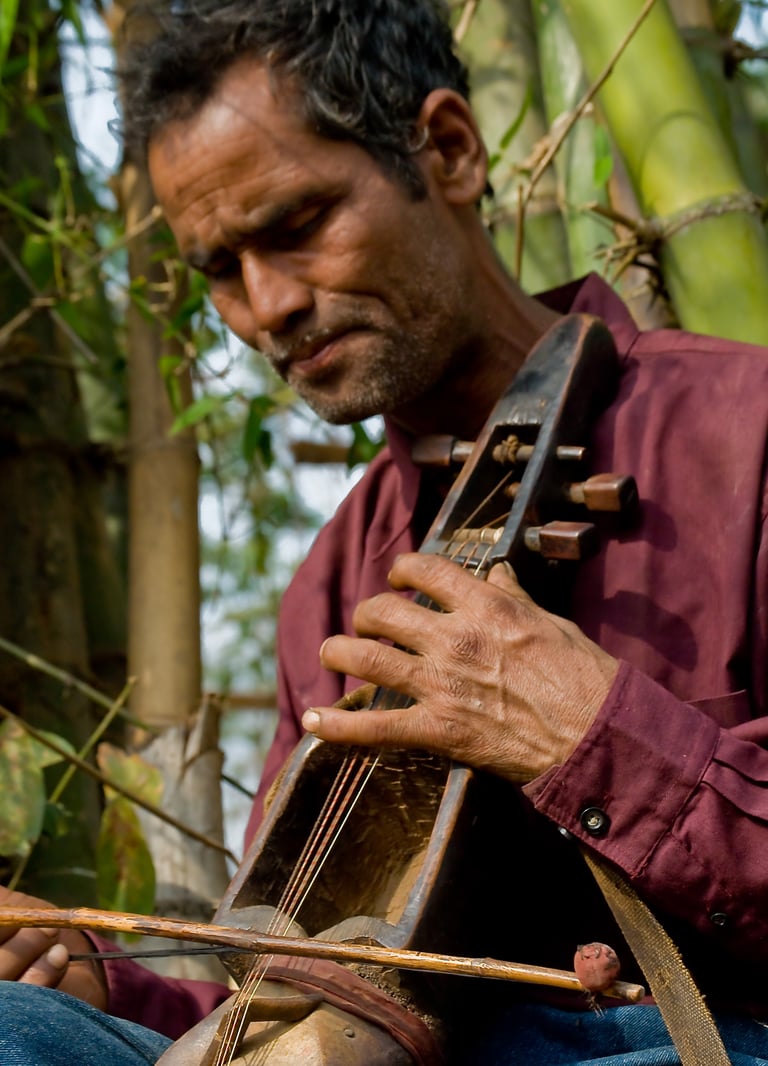[Video] Sarangi and Human Voices, Stories: Nepal’s Treasured Musical Instrument
While medieval Europe had the minstrel, Nepal’s rugged terrain was explored musically by the ethnic group Gaine.
BLOGS

I met Raju Gayak during my trip to Sauraha, Nepal in 2019. He has been playing the sarangi for over 30 years.
While medieval Europe had the minstrel, Nepal’s rugged terrain was explored musically by the ethnic group Gaine (Nepali:गाईने). The Gaines would travel village to village, singing stories of heroism, relationships, wars and life as a whole. Many of the tales passed down orally via songs as true history and became the only living record of events and persons.
Nepal’s caste system, at first, was a way to distribute works for the smooth functioning of the society. An economist might even compare the caste system to the concept of “specialization” or “comparative advantage”. Meaning, Gaines, who still live their life based on the ability of their throats and musical notes, have out of the ordinary knowledge of music. Sans any formal music education, their skill-sets developed over generations of watching, listening and learning.
The primary instrument Gaines play is the sarangi (Ne: सारङ्गी), which is the unofficial but widely agreeable national instrument of Nepal. Although no concrete records have been discovered about the inceptions of sarangi, the popularized notion holds that Hindustani classical musician Niyamat Khan brought sarangi to the limelight. Khan used sarangi in many of his compositions, known as Khyal, between the early to mid-1700s, when Mughal Emperor Muhammad Shah ruled India.


However, the Indian and Nepalese sarangi differs in the structure and the forms of music it is used to produce. The Indian sarangi is box-shaped and its musical arrangements are more structured in terms of rhythm, melody and harmony, which makes parallels to orchestra music. Whereas, the Nepalese Sarangi players perform free-flowing, folk music on their curvy instruments.
Creation of sarangi relies on a single piece of wood, traditionally: red cedar wood. Animal skins, usually of goat or sheep cover the lower part of the sarangi. In modern times, Komodo dragon skins are also being used. The origin of the word “sarangi” can be traced to the Sanskrit word “Sarang” meaning “spotted deer”–perhaps considering the resemblance to the dried skin on the instrument.
Also, there are variations of Persian and Hindi words that might have influenced the naming of sarangi. The instrument is regarded as the only one that can imitate the whole range of the human voice, making it a solid companion for storytelling songs. “Sau rang” in Hindi means “a hundred colors”.
After decades of negligence, the sarangi had lost its luster in mainstream Nepali music. But in recent years, the sarangi has struck a chord among younger Nepalese seeking to get in tuned to the culture and tradition as a way of finding one’s identity. However, many music schools and vocational training sessions offered at various establishments in large cities will likely offer modern techniques and by the book lessons.
The Gaines incorporated customs true to its nature and authentic to its form.
How may that be preserved?
Wikimedia Commons

